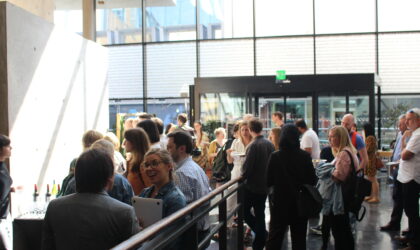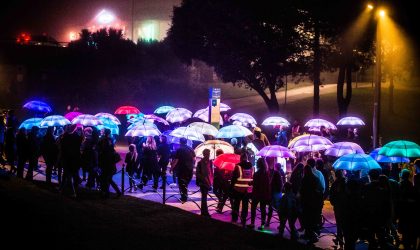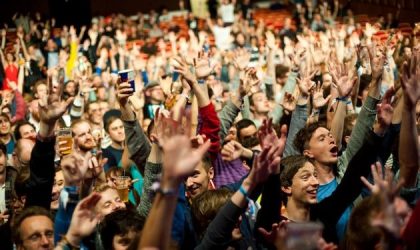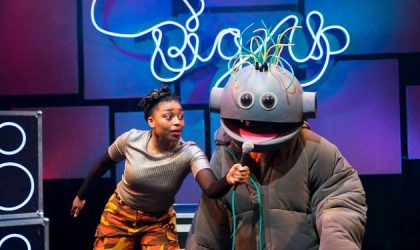
Beginner Read Audience Data Collection and Evaluation
Audience research is the process of gathering information about the people who visit you or see your work, use your services, or engage with your organisation.
In this article
If you’re curious about NFT technology but you’re unsure of what it is or how it may be relevant to arts and cultural organisations, then you’re in the right place.
This article is intended as a general, impartial introduction to the topic. We explore these digital assets, explain how they work and outline some examples. We recognise that it’s a new and constantly evolving area with complex rights and wider implications.
NFT stands for Non-Fungible Tokens. To explain what this means in simple terms, non-fungible items are unique and one of a kind, like an original artwork, or sculpture. Fungible items are not unique and can be plentiful, like prints or replicas.
They also allow creators to control ownership of their work without limiting who has access to it. With these qualities, NFTs are unique digital assets that can be used in a variety of ways. NFTs can be anything, such as drawings, music, memes, or photos. The sky’s the limit.
Due to the nature of the way they are designed, they provide something that can’t be edited or copied, whilst simultaneously allowing the artist to retain copyright to their work. Think of them like actual paintings that hang on your wall, but stored digitally.
The power of NFTs gives artists an innovative way to sell their work. One of the most exciting things about this technology is that it allows artists to collect a percentage of the sale of the NFT each time it changes hands.
The NFT space is springing into life. Interest in these Non-Fungible Tokens (NFTs) is rising rapidly. Sales were up over 55% to £285 million in 2021 alone.
NFTs are files that live on the blockchain. Because of this they can’t be edited, duplicated, deleted, or manipulated. They can however, be sold, traded, and bought with their ownership always being tracked by the blockchain.
The blockchain is a shared database that records information chronologically. Once data is written to the blockchain it cannot be tampered with or changed.
It’s a ledger or logbook of information. When information is saved to the chain, it cannot be changed, only added to.
Blockchain is different to a regular database because the data is recorded in cryptographically linked blocks, rather than storing information in a table.
As new data comes in it is entered into a fresh block. Once this block is full it is chained together with the previous block in chronological order.
Different types of information can be stored on a blockchain, but the most common use so far has been as a ledger for transactions.
Before a fresh block gets added to the chain, it is transmitted to a decentralised network of computers scattered across the world. This network then checks if the fresh information is trustworthy. If the network collectively agrees the transaction is legitimate, the block is approved and added to the chain.
Blockchains are also known as Distributed Ledger Technology (DLT). The decentralised nature of blockchain technology makes it brilliant for preventing fraud and providing authenticity that is traceable.
This Ted Talk is an excellent and simple explanation of what blockchain is:
Digital art:
Improving on existing infrastructure:
As more and more arts and culture organisations have started to experiment and innovate with NFTs, some of the complexities and possible pitfalls associated with the technology have become apparent. Some of these are highlighted in this article which takes a look at the adoption of NFTs in the museums sector.
An interesting example of an artist using NFTs in their work is Damien Hirst and his artwork “The Currency”.
It consists of 10,000 sheets of A4 paper covered in painted coloured dots. Each one is unique, and the paper has been specially watermarked to emulate currency.
Each work originally sold for £2,000, and gave the purchaser the NFT version of the work they bought. The purchasers were given a deadline and the option to swap their NFT for the real-life version. After the deadline, either the NFT or the original artwork was destroyed, depending on which version the purchaser decided to keep.
The video below explains the project.
https://www.youtube.com/watch?v=vEsVJJy1od4
Articles and examples of usage from the cultural sector and beyond:
‘The Climate Controversy Swirling around NFTs’ by The Verge
We hope you’ve found this introductory guide to NFTs useful.
The Digital Culture Network is here to support you and your organisation. Our Tech Champions can provide free 1-2-1 support to all arts and cultural organisations who are in receipt of, or eligible for, Arts Council England funding. If you need help or would like to chat with us about any of the advice we’ve covered above, please get in touch. Sign up to our newsletter below and follow us on Twitter @ace_dcn for the latest updates.
Related content by topic
The Fundamentals Creating Income Streams NFT NFTs non fungible tokens cryptocurrency blockchain smart contracts
Beginner Read Audience Data Collection and Evaluation
Audience research is the process of gathering information about the people who visit you or see your work, use your services, or engage with your organisation.
Beginner Read Digital Accessibility
The goal of digital accessibility is to create digital products and services that are inclusive and provide equal access to information and functionality to all users, regardless of their abilities. This article aims to introduce you to the principles of digital accessibility, and shed some light on some of the things you need to know when creating accessible digital content.
Beginner Read Digital Strategy
An effective digital strategy can be vital to your organisation’s success. Read on to understand the key considerations when developing yours.
Beginner Read Email Marketing
Email marketing is a powerful tool when it comes to building relationships with your audience. Read on to find out more about what it can do for your organisation.
Beginner Read Box Office and Ticketing Customer Relationship Management CRM
Understanding your audience data can be your ticket to success. Read on to find out how to make the most of what your customers tell you.
Beginner Read Social Media
Social media is a unique and powerful way to help your organisation thrive and engage with your audience. Read on to find out more.




